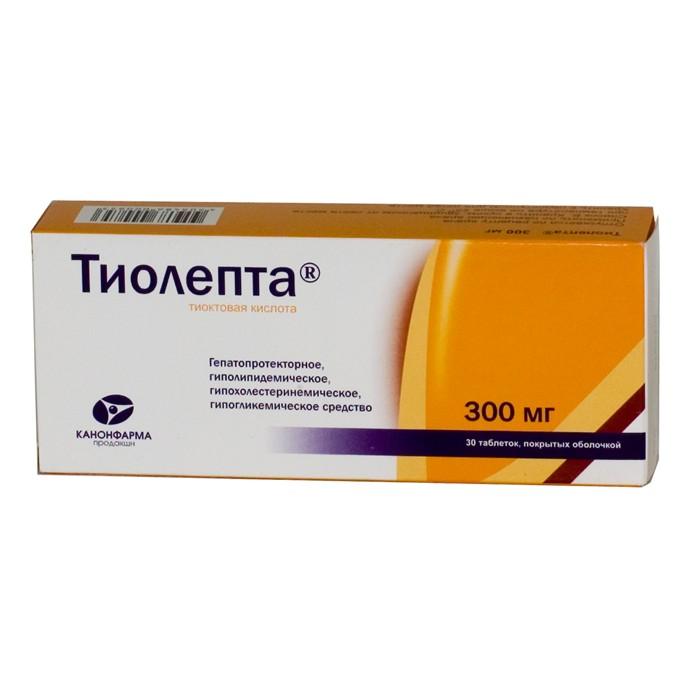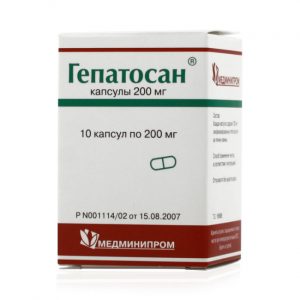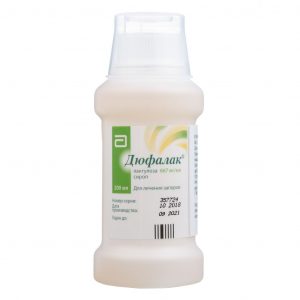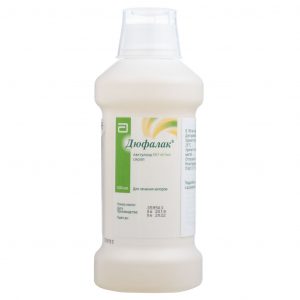Description
Release form
Coated tablets
Pharmacological action
Pharmacodynamics
Thioctic acid (alpha lipoic acid) – an endogenous antioxidant (binds free radicals), is formed in the body during the oxidative decarboxylation of alpha keto acids. As a coenzyme of mitochondrial multienzyme complexes, it participates in the oxidative decarboxylation of pyruvic acid and alpha-keto acids. The nature of the biochemical action is close to the B vitamins.
It has hepatoprotective, hypolipidemic, hypocholesterolemic, hypoglycemic effect. Helps reduce blood glucose and increase liver glycogen content, as well as reduce insulin resistance. Participates in the regulation of lipid and carbohydrate metabolism, stimulates cholesterol metabolism, improves liver function. Improves trophic neurons. The use of the meglumine salt of thioctic acid (having a neutral reaction) can reduce the severity of adverse reactions.
Pharmacokinetics
When taken orally, it is rapidly and completely absorbed from the gastrointestinal tract (ingestion reduces absorption). The time to reach maximum concentration is 40-60 minutes. Bioavailability is 30%.
Has the effect of “first passing” through the liver. The formation of metabolites occurs as a result of side chain oxidation and conjugation.
Distribution volume – about 450 ml / kg. Thioctic acid and its metabolites are excreted by the kidneys (80 90%). The elimination half-life is 20-50 minutes. The total plasma clearance is 10-15 ml / min.
Indications
Diabetic and alcoholic polyneuropathy.
Special instructions
Patients with diabetes need constant monitoring of blood glucose concentration, especially at the initial stage of therapy. In some cases, it is necessary to reduce the dose of insulin or an oral hypoglycemic drug to avoid the development of hypoglycemia.
During treatment, patients should refrain from drinking alcohol and use caution when driving vehicles and engaging in other potentially dangerous activities that require increased attention and speed of mental and motor reactions
Composition of
1 coated tablet contains: active substance:
thioctic acid – 300 mg
excipients:
potato starch,
aerosil A-300 (silicon dioxide colloidal),
primarose calcium srdlarkp ,
milk sugar (lactose),
microcrystalline cellulose,
castor oil,
selecout AQ-01812 (hydroxypropyl methylcellulose (hypromellose),
polyethylene glycol 400 (macrogol 400),
6000g polyethylenegol
titanium dioxide,
iron oxide yellow,
quinoline yellow.
Dosage and administration
Assign inside 600 mg (2 tablets) once a day.
Tielept tablets are taken on an empty stomach, approximately 30 minutes before the first meal, without chewing and drinking a small amount of liquid.
The duration of the course of treatment is determined by the doctor.
Side effects
Typically, tiolepta is well tolerated.
Possible dyspepsia, including nausea, vomiting, heartburn.
In some cases, the development of skin allergic reactions (urticaria) is possible.
Possible development of hypoglycemia (due to improved glucose uptake).
Drug Interactions
Thioctic acid reacts with metal ionic complexes (for example, cisplatin), therefore, with the simultaneous use of Tilept, it can reduce the effect of cisplatin. After taking the Tielept drug in the morning, it is recommended to use iron and magnesium preparations, as well as to use dairy products (due to their calcium content) after lunch or in the evening.
With the simultaneous use of Tiolept enhances the action of insulin and oral hypoglycemic agents.
Alcohol (ethanol) reduces the therapeutic activity of thioctic acid.
Overdose
Symptoms: headache, nausea, vomiting.
Treatment: symptomatic treatment. There is no specific antidote.
Storage conditions
In a dry, dark place at a temperature of no higher than 25 ° C. Out of the reach of children
Term hodnosty
2 years
Deystvuyuschee substances
Thioctic acid
Pharmacy terms
Prescription
Form of Treatment
tablets




